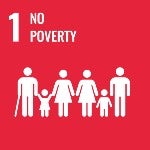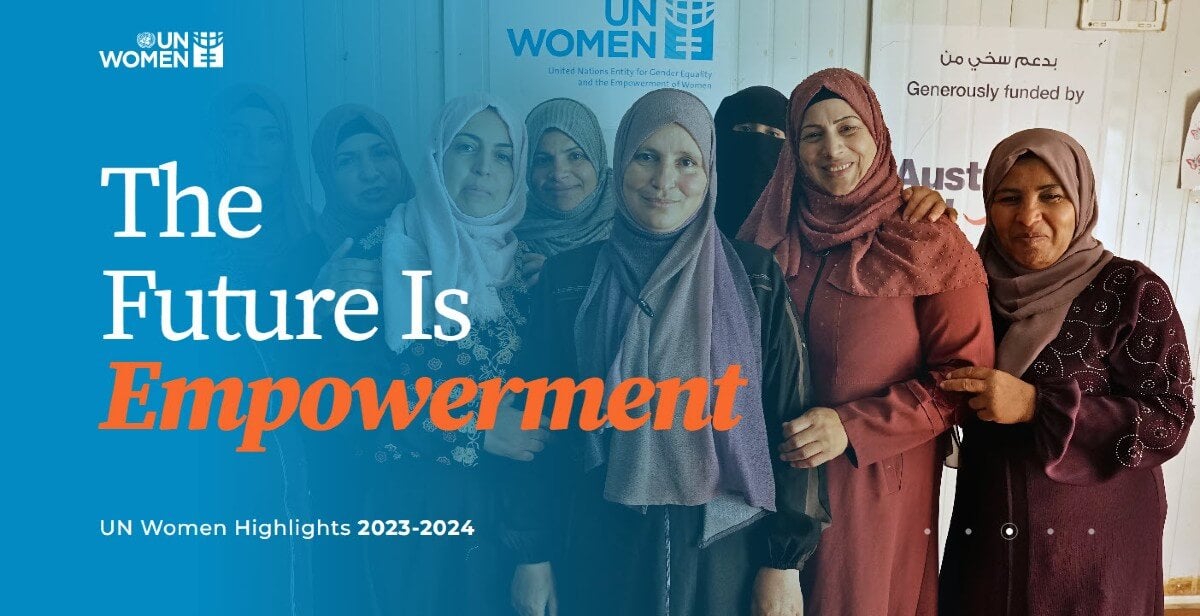Investing in women’s rights is a pathway to sustainable development
This year marks a pivotal moment for the Sustainable Development Goals and the future of global development cooperation. With only six years remaining until the 2030 deadline for the goals, progress has been too slow, especially on gender equality. The Summit of the Future and the forthcoming thirtieth anniversary of the Beijing Declaration and Platform for Action provide critical opportunities to recommit to accelerating progress on gender equality and women’s rights, including by implementing evidence-based, well-resourced, high-impact and time-bound actions in each country.
Acknowledging the negative impact of recurrent crises, the United Nations has identified six key investment pathways for revitalizing SDG implementation, known as the Six Transitions. While gender equality is not a distinct transition, all six depend on realizing it, alongside urgent complementary action on key areas of the Beijing Platform for Action, such as ending violence against women, equal participation in decision making, and women, peace and security.
This section highlights the interconnections among the six transitions and gender equality. The remainder of the report provides a goal-by-goal assessment of the status of gender equality across all 17 goals and many actions needed to accelerate progress.
Food systems
Leveraging smart technologies and promoting circular agriculture innovations can transform food systems and provide affordable, sustainable and diversified sources of nutrition.
Women play pivotal roles in food systems as producers, workers, processors, distributors, traders and consumers. They sustain household nutritional security. Yet women in agricultural production often face difficult conditions due to prevailing gender inequalities and discriminatory norms. For example, women are more likely to be unpaid family workers or casual labourers in agriculture. They face constraints in producing certain crops and participating in activities dominated by men. Productivity on female-run farms lags that of male-managed farms of the same size by 24 per cent, and on average, women earn 18.4 per cent less than men in agricultural wage employment. In terms of agricultural land, women account for less than 40 per cent of owners or rights-bearers in 32 out of 49 countries with data. All these factors result in women’s disproportionate rates of poverty and food insecurity.
Gender-responsive policies to counter negative social norms, close gaps in resources and assets, and boost women’s participation in policy choices can lead to more sustainable and resilient food systems and foster food security for all. Ending the gender gap in farm productivity and the wage gap in food systems would increase global gross domestic product (GDP) by 1 per cent (or nearly $1 trillion). It would reduce global food insecurity by about 2 percentage points and the number of food-insecure people by 45 million. If half of small-scale producers, men and women, benefited from development interventions focused on empowering women, the incomes of 58 million people would rise. Resilience to shocks would improve for 235 million people.
In focus
-
In 2023, 26.7% of adult women were moderately or severely food insecure.
- Small-scale farmers, the majority of whom are women, produce 1/3 of the world’s food. But only 19% of agricultural policies are gender-responsive. Only 13% promote rural women’s participation.
- Women are less likely than men to own agricultural land in 40 out of 46 countries with data.
Energy access and affordability
It is imperative to step up clean energy investment and technology transfers, improve energy access and affordability, and enhance energy efficiency.
Energy accounts for more than 75 per cent of total global greenhouse gas emissions, making it the leading contributor to climate change. At the same time, in 2022, 685.2 million people lacked access to electricity, and up to 2.1 billion people used polluting fuels for cooking, largely in sub-Saharan Africa and Asia and the Pacific. These shortfalls endanger women’s health and safety, limit their livelihood prospects, and increase unpaid care and domestic work. Energy as a sector has been traditionally male-dominated and rife with gender inequalities; women are severely underrepresented in employment and leadership. Men hold high shares of technical and managerial posts, while women are usually in clerical and administrative positions with limited influence and decision-making power. In 2024, women held 23.3 per cent of ministerial positions overall but only 12 per cent of those responsible for energy, natural resources, fuels and mining.
Women and girls stand to gain significantly from an equitable and gender-responsive transition to sustainable energy. When households are connected to electricity, women are 9 to 23 percentage points more likely to gain employment outside the home. Universal access to clean cooking and the replacement of polluting fuels could reduce illnesses and deaths and save households up to 40 hours a week otherwise spent on collecting fuel and preparing meals.
To be successful, this transition requires innovative solutions, new and bolder business models for energy systems, and adequate gender-responsive financing. Women and girls need to be equally and meaningfully included at all stages and levels as leaders and drivers of change, designers, implementers, and end users of renewable energy policies, technologies and practices.
In focus
- In 2019, 1.5 million women and girls died prematurely from exposure to household air pollution, making it the third leading cause of female deaths.
- Women are 9-23% points more likely to gain employment outside the home following electrification.
- Access to clean cooking could save households 40 hours a week on average.
Digital connectivity
The United Nations calls for delivering equitable e-government services and making digital connectivity an opportunity for economic leapfrogging, including through greater financial inclusion.
Digital technologies are advancing exponentially, offering significant opportunities and a powerful multiplier effect. They also pose risks, particularly for gender equality and women’s empowerment. Increased digitization provides women and girls with greater educational, employment, and business prospects, more control over their incomes and health, and spaces to connect and amplify their voices. At the same time, new and emerging technologies, including artificial intelligence, magnify risks such as technology-facilitated violence against women. If left unaddressed, the global gender gap in Internet use could cost low- and middle-income countries an estimated $500 billion over the next five years.
The Global Digital Compact, launched at the Summit of the Future, presents a unique opportunity to harness digital technology for sustainable development. The collective efforts and recommendations of the Action Coalition on Technology and Innovation for Gender Equality have helped make gender equality a key principle of the compact, which commits to the full, equal and meaningful participation of all women and girls in the digital realm. The Summit’s Pact for the Future expresses grave concern about the gender digital divide and calls for addressing gender-related risks from technologies. It also urges dismantling barriers to the equal participation and leadership of women and girls in science, technology and innovation.
In focus
- 65% of women used the Internet in 2023, compared to 70% of men.
- Women are about 8% less likely to own a mobile phone than men, down from 10% in 2020.
- The global gender gap in Internet use could cost low- and middle-income countries an estimated $500 billion over the next five years.
Education
Providing education for all and enhancing digital skills is a path to future prosperity.
The strong link between education and gender equality is well established. Yet, globally, 119.3 million girls remain out of school, a figure that has declined by 5.4 million since 2015. Some 39 per cent of young women fail to complete upper-secondary school. The costs of losses in schooling and learning are staggering: The United Nations Educational, Scientific and Cultural Organization (UNESCO) estimates that by 2030, the annual social costs of the global basic skills deficit will cross $10 trillion, more than the GDP of France and Japan combined. In sub-Saharan Africa, where girls are at a significant disadvantage compared to boys, the annual cost of girls leaving school early is $210 billion, more than 10 per cent of the region’s combined GDP. If the number of children dropping out of school early and the number of those with less than basic skills each fell by 1 percentage point, annual global labour income would skyrocket by $470 billion and over $650 billion, respectively.
Proven gender-responsive policies, such as lowering schooling costs, providing cash transfers to households to support girls’ education, creating safe environments for girls and taking measures to prevent all forms of gender-based violence, establishing comprehensive sexuality education, ensuring a gender-balanced and diverse teacher workforce, and conducting awareness-raising are key investment priorities to help achieve universal education, reduce school dropout rates and increase skills among girls.
In focus
- 39% of young women fail to complete upper-secondary school, down from 46% in 2015.
- $10 trillion is the annual global estimated cost of children failing to acquire basic skills.
- Reducing school dropout rates by 1% point would generate a global labour income of $470 billion.
Jobs and social protection
Modernizing social protection systems can help eradicate poverty and break the vicious cycle of informal employment and low pay.
Globally, among people aged 25 to 54 in 2022, 63.3 per cent of women were engaged in the labour force, compared to 91.9 percent of men. Surprisingly, there has been little change in these figures over the last 20 years. A global gender pay gap still sees women earning 20 per cent less than men.
Comprehensive, gender-responsive social protection systems are essential for reducing poverty and inequality and putting countries back on track to reach the SDGs. Despite important progress over the past decade, wide coverage gaps remain. In 2023, just over half the world’s population (52.4 per cent) had at least one social protection benefit. An estimated 2 billion women and girls were unprotected. Chronic gaps in care services and policies have left millions of workers with family responsibilities without adequate protection and support. Investing in the care economy would simultaneously reduce women’s time and income poverty, support their labour force participation and expand care-related employment, potentially creating almost 300 million jobs by 2035.
The United Nations Global Accelerator on Jobs and Social Protection for Just Transitions is a joint initiative launched by the United Nations Secretary-General in September 2021 to accelerate progress on the SDGs and close global gaps in decent jobs and social protection. By bringing together Member States, United Nations organizations, international financial institutions, public development banks, social partners, civil society and the private sector, the initiative aims to create at least 400 million decent jobs, primarily in the green, digital and care economies, and extend social protection coverage to over 4 billion people who are currently excluded.
In focus
- In low-income countries, 91.1% of women’s employment and 86.2% of men’s employment is informal and not regulated or protected by the State.
- 2 billion women and girls have no social protection coverage. 50.1% have at least one benefit, compared to 54.6% of men.
- Investing in the care sector could create almost 300 million jobs by 2035.
Climate change, biodiversity loss and pollution
Developing sustainable transportation, decarbonizing industry, and establishing sustainable consumption and production patterns can mitigate the triple planetary crisis of climate change, biodiversity loss and pollution.
Existing gender inequalities make women and girls particularly vulnerable to the effects of climate change, biodiversity loss and pollution. This poses unique threats to their well-being and limits their decision-making power and opportunities for contributing to climate mitigation and adaptation as well as just energy and economic transition. Under a worst-case climate scenario, up to 158 million more women and girls could be pushed into extreme poverty by 2050, with nearly half of them in sub-Saharan Africa. Up to 236 million more women and girls may experience food insecurity.
Feminist Climate Justice: A Framework for Action offers a vision where everyone thrives on a healthy and sustainable planet. To achieve this, UN-Women has outlined four pillars:
- Recognition: Acknowledging women’s rights, labour and knowledge, including their expertise in preserving ecosystems and practicing sustainable agriculture.
- Redistribution: Investing in social protection systems to enhance women’s resilience to climate impacts and support gender-just transitions to sustainable economic models.
- Representation: Ensuring diverse women’s voices are heard in environmental decision-making, whether in social movements, ministries or delegations to international climate talks, and bridging the gap between climate action demands and government responses.
- Reparation: Addressing historical injustices between and within countries by cancelling unsustainable debt, meeting climate finance commitments, and funding loss and damage initiatives.
By prioritizing people and the planet over profits, it is possible to create a more equitable and sustainable world.
In focus
- Under a worst-case climate scenario, up to 158 million more women and girls could be pushed into extreme poverty by 2050.
- As many as 236 million more women and girls may experience food insecurity.








